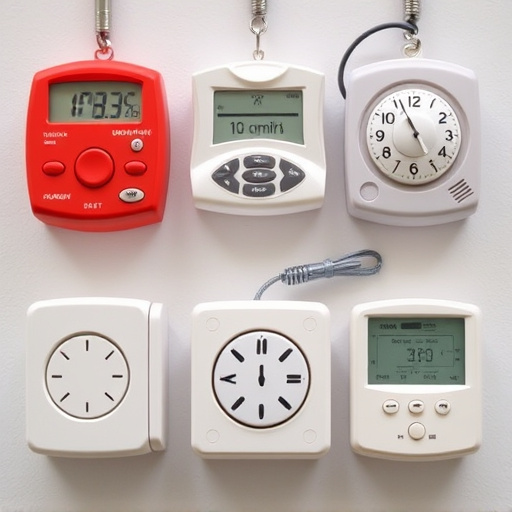Self-defense tools like personal alarms with GPS tracking have evolved to address indoor safety challenges, where traditional signals may fail. These devices leverage satellite or cellular signals to provide continuous connectivity and accurate location data, even within large buildings. Features such as high-decibel alarms, automatic fall detection, and emergency buttons make them reliable for summoning help promptly, especially in situations where personal alarm ranges are limited. Optimal placement near exits or person-specific items enhances their effectiveness, ensuring swift first response.
Staying safe is a top priority, especially as personal security becomes increasingly important. Self-defense devices equipped with GPS tracking offer a powerful layer of protection, enabling users to call for help swiftly and accurately. This article explores the world of self-defense technology, delving into the benefits of GPS tracking, popular devices, and strategic use cases like maximizing personal alarm range in buildings for optimal safety.
- Understanding Self-Defense Devices: The Basics and Benefits
- GPS Tracking Technology in Self-Defense Tools
- Popular Self-Defense Devices with GPS Tracking
- Using Personal Alarm Range in Buildings: Safety Strategies
Understanding Self-Defense Devices: The Basics and Benefits
Self-defense devices have evolved significantly, incorporating technology like GPS tracking for enhanced safety and peace of mind. These tools are designed to empower individuals by providing them with effective means to deter potential attackers and enable quick response in emergency situations. The market offers a range of options, from personal alarms to sophisticated GPS trackers, each catering to different needs and environments.
One critical aspect to consider is the personal alarm range in buildings. Many self-defense devices are designed for outdoor use, but indoor spaces present unique challenges due to signal obstruction from walls and other structures. High-quality self-defense tools with GPS tracking can overcome this by leveraging satellite signals or cellular networks when indoors, ensuring continuous connectivity. This feature is vital for scenarios where help needs to be summoned promptly, especially in large or labyrinthine buildings.
GPS Tracking Technology in Self-Defense Tools
GPS tracking technology has revolutionized personal safety, especially in self-defense devices. These advanced tools leverage global positioning systems to provide real-time location data, enhancing the effectiveness of emergency responses. When integrated into self-defense tools like personal alarms, GPS functionality significantly improves their range and reliability, even within buildings where signal strength can be weak. This feature ensures that help can be dispatched promptly, as first responders can accurately pinpoint the user’s location.
The integration of GPS technology in self-defense devices offers several advantages, particularly for individuals who frequently find themselves in unfamiliar or potentially dangerous environments. By simply activating the alarm, a person in distress can send their coordinates to emergency services, allowing for swift intervention. This capability is especially crucial in crowded places like festivals, where the personal alarm range in buildings may be limited, or during late-night walks where help might take longer to arrive without GPS tracking.
Popular Self-Defense Devices with GPS Tracking
In today’s digital era, self-defense devices with GPS tracking have emerged as powerful tools for personal safety. Among the most popular options are personal alarms that utilize GPS technology to enhance their effectiveness. These devices are designed to be easily portable and can be activated discreetly in case of emergencies. The GPS feature allows them to pinpoint the user’s location, enabling emergency services to respond swiftly, even within dense buildings where traditional signals might be hindered.
One standout device is the Smart Personal Alarm, equipped with a high-decibel alarm and a built-in GPS tracker. It can send real-time location updates to pre-selected contacts, ensuring help arrives promptly. Additionally, some models offer features like automatic fall detection and emergency buttons, making them versatile options for individuals living alone or navigating unfamiliar spaces, especially in areas where the personal alarm range in buildings might be limited by structural obstacles.
Using Personal Alarm Range in Buildings: Safety Strategies
Using Personal Alarm Devices within Buildings: Maximizing Safety
When it comes to personal safety, especially indoors where GPS tracking might be limited, understanding the effectiveness of a device’s range is key. Personal alarm devices designed with GPS capabilities offer enhanced security for individuals in buildings. However, their utility can vary significantly based on the structure and its surroundings. For instance, these alarms can be invaluable in open-plan offices or large residential complexes, allowing users to quickly alert authorities or loved ones in case of distress.
Strategizing the placement of such devices is crucial. Positioning them near exits, in well-lit areas, or on person-specific items like keys or bags increases their effectiveness. Additionally, ensuring regular testing and maintaining clear communication with monitoring services can ensure these devices function optimally within their specified range, providing peace of mind in potentially hazardous situations within buildings.
Self-defense devices equipped with GPS tracking offer a layer of protection and peace of mind, especially when navigating unfamiliar environments or facing potential dangers. As discussed, these tools provide real-time location data, ensuring swift assistance during emergencies. When used effectively, particularly within buildings where personal alarm ranges can be limited, they can serve as powerful deterrents and communication devices. By staying informed about the latest self-defense technologies, individuals can take proactive steps to enhance their safety and security.
